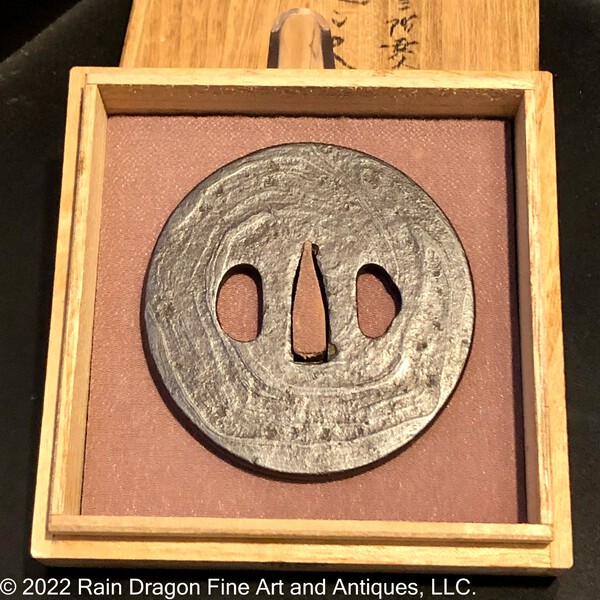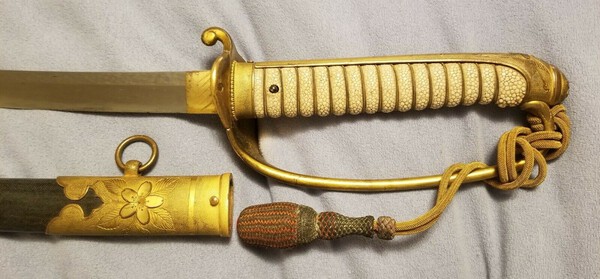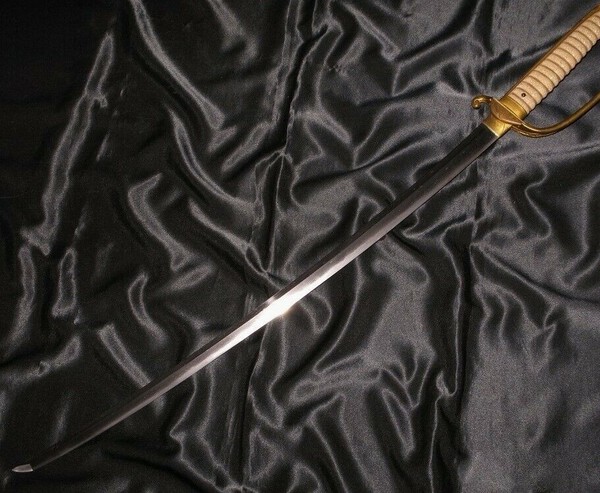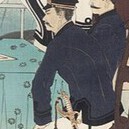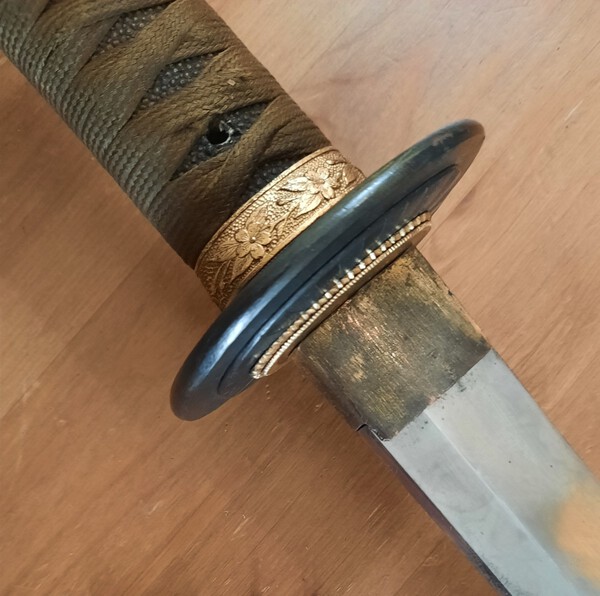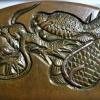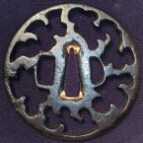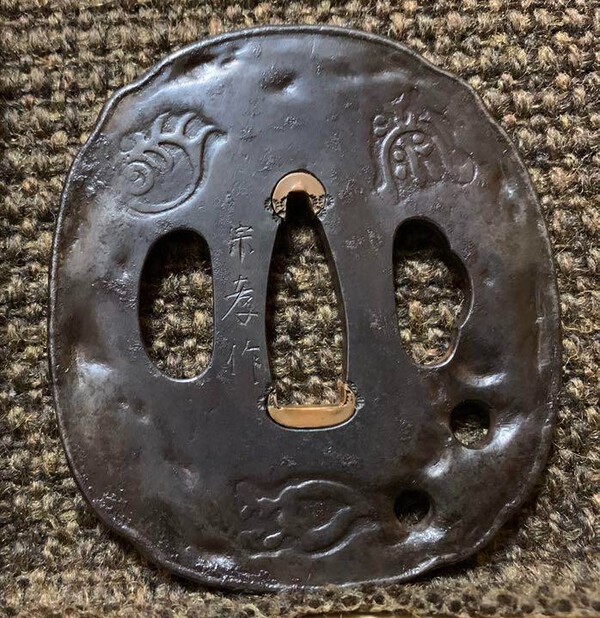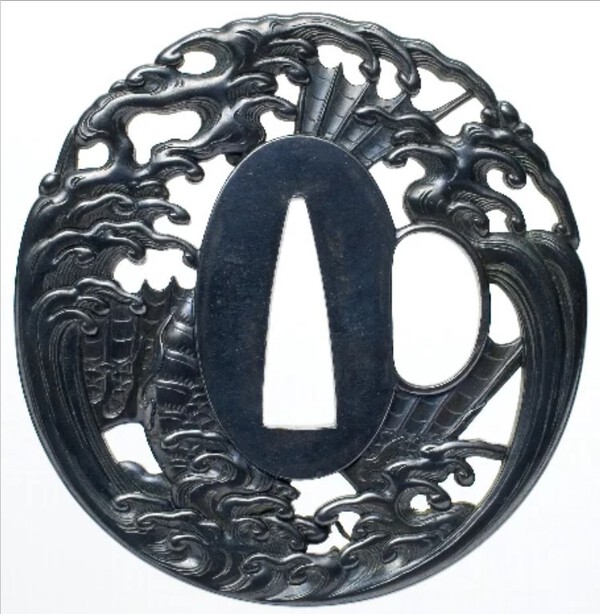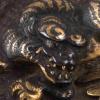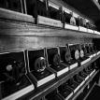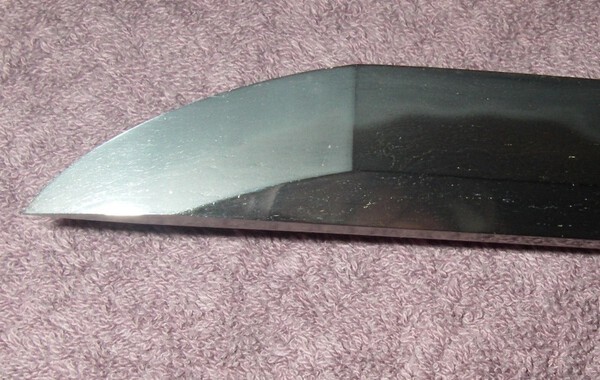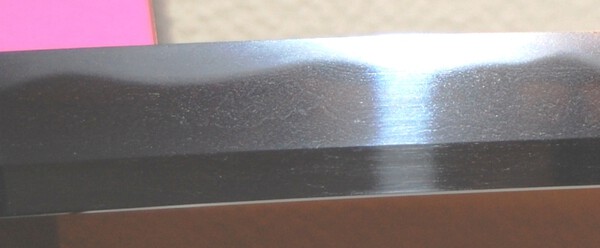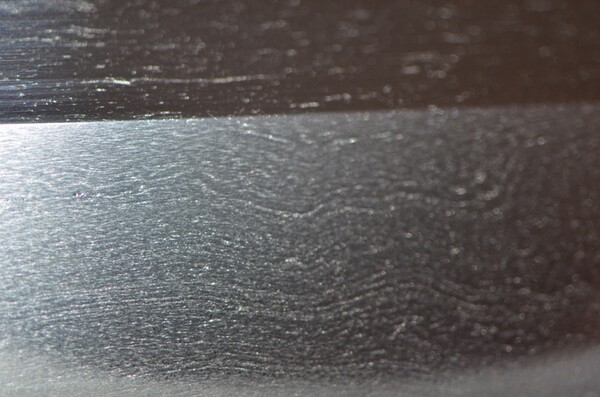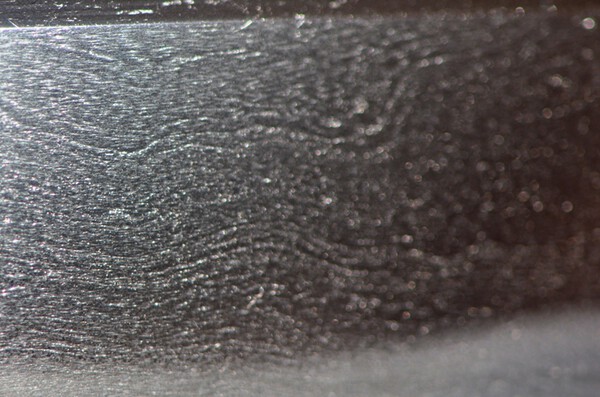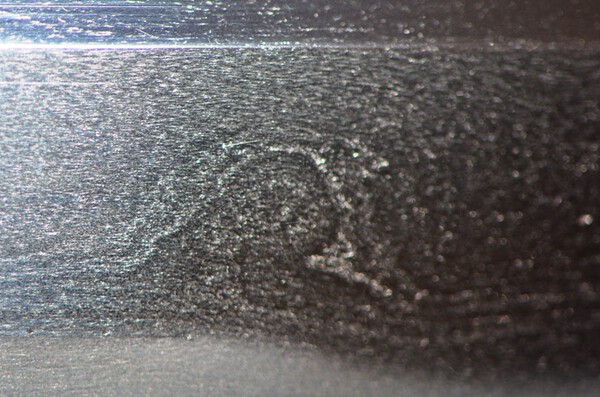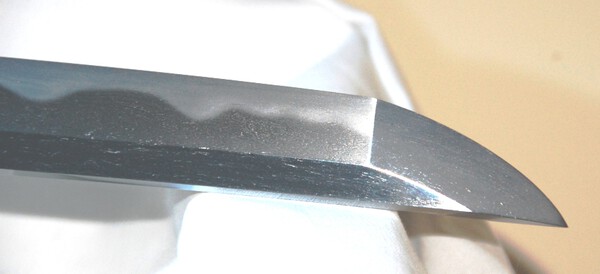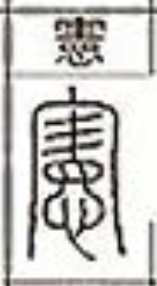Leaderboard
Popular Content
Showing content with the highest reputation on 09/21/2022 in all areas
-
The stamps are Taoist talisman of the ‘true form of the five peaks’ (五岳真形図). According to legend, Taishang Daojun (a Taoist god) created five great mountains, and from which a mystical map of the world was created. Each of the five symbols represent one of those mountains, and Taoists believed that they will be greeted and protected by the spirits of the mountains when they travel with these talisman. I have a very similar tsuba which is signed ‘Sanada Tenpo’ (真田天法) [signed Tenpo tsuba are very uncommon] and measures 92x85mm5 points
-
Yes, I am on Instagram. I mostly look at aquariums and aquascaping on Instagram. I do follow a few people (ex. Ray Singer) in this hobby on Instagram. Thanks for the replies, everyone. I really enjoyed bringing this old tsuba out of storage and taking another detail look at it. Here is the second photo I taken. Enjoy.3 points
-
This sword was discussed in detail on the nmb. Super interesting. Here is the thread: https://www.militaria.co.za/nmb/topic/40635-translation-help-on-additional-kanji-on-masanaga-gendaito/#comment-419437 1 WW2 Japanese Army Officer's sword made by Masanaga available. Masanaga's given name was Ito Kishinaga. While making swords at the Minatogawa Shrine, Masanaga signed his swords under the name Masakiyo. He also made Special Order swords at a nearby forge. When making swords at this forge, called the 七生刀鍛煉道場 'Seven Lives' Forge, he signed as Masanaga. See photo of the graphic provided by Trystan on the Nihonto Message Board on Ito Kishinaga/Masanaga/Masakiyo. The Minatogawa Shrine was dedicated to Kusunoku Masashige. Before he lost his life in battle in 1336, he uttered the phrase 七生報國 'Shichishō Hōkoku'. This means 'would that I had seven lives to give for my country'. As mentioned above, the forge near the Minatogawa where Special Order naval or army swords were made, was referenced as the 'Seven Lives' Forge. This sword is dated October 1943. The number '17' is stamped on the nakago's mune. This sword has two latch releases. See photo provided from Jim Dawson's book Swords of Imperial Japan 1868-1945 Cyclopedia Editiion. The blade measures 26 5/16" (67.6 cm) (measured properly from the blade tip to the notch in the blade spine). This traditionally-made gendai katana has an expertly water-tempered wavy hamon. This Japanese WW II Army Officer's katana is in 1944 shin-gunto mounts (aka Type 3 mounts). CONDITION: The handle wrap is perfect. The sword locks in the saya, and the lock release buttons function perfectly. The saya is perfect. There are some tiny specks of paint on one side--but the whole condition of this sword is such that it just blends in--the condition is so exceptional. There are two nicks in the blade edge. They are such that they only go 10-15% of the thickness of the hamon. The blade will polish beautifully if desired. But the blade is exceptional without a polish. The temper line and boshi are perfectly healthy. This sword is guaranteed against fatal flaws. $3600 (If paying via credit card or PayPal, 4% credit card fee/PayPal fee added to the purchase price). Here is the link to the complete complement of photos: https://stcroixblades.com/shop/products/masanaga-Japanese-ww2-samurai-army-sword-1944-mounts-minatogawa-shrine/ --Matthew Brice www.StCroixBlades.com2 points
-
Hi Thomas, Here is an oshigata of the Masakazu tang marked 'Fu' 37. It is signed "Iwashiro ju Masakazu" and has the RJT star. I'm not sure if it was in RS fittings, but it does have two ana. It was published in "Gunto Kumiai Shimatsu - Rikugun Jumei Tosho no Shuen" 1994 in Aizu Pref. (shown in frontispiece). I think I gave Bruce the details but maybe not the pic. Hope this helps...2 points
-
Always wanted a Navy Kyu and finally found a nice one. Even has the tassel! NTHK papers say the blade was made in the Eisho era about 1504-1521. attributing it to the Uda Kunimune. Nagasa = 25 1/2". (64.7cm) Blade thickness at habaki is 3/16" (6.77mm) Width at habaki 1" (2.54cm) Width at Yokote is 9/16" (14.2mm) Sori is 3/4" (19mm)2 points
-
Loving all the feed back you guys. Well by the sounds of it I'll be happy with his work. Definitely gonna reach out and set something up with Moses. So far I really like what I see. The fact that there's no problems going through shinsa is really all I needed to know. Thanks again you guys A++.2 points
-
I had an appointment with a retina specialist today and he is relatively positive about my AMD. It is of the dry type, and isn't very advanced. I don't have many of the risk factors for it, except a diet rich in saturated fats, (which I've changed) so he thinks I have a good chance of either having the slowly developing kind, and possibly never developing significant vision loss. I am currently taking an AREDS 2 supplement and have a follow up appointment scheduled in six months. Also have an Amsler Grid installed on the refrigerator. So I am going to go forward with my plans regardless of my vision, for now. Thanks for all the advice!2 points
-
From those photos, I would say it is a Type Chinese Fake. i’ve never seen a scabbard lock squared off like that. And the artwork on both end caps is off. The blade looks possibly better than the normal fake, but I would have to see more of it to say.1 point
-
1 point
-
Re Item No. 259 - George Miller has kindly been doing some digging regarding this piece and has sent his conclusions below. I must admit that I never thought that the young Joi could, ( still not proven , however ) be responsible for this - I guess it would really need to go to shinsa for their views. ' Just a quick note on your Item No. 259 signed Nagaharu. The 3rd Generation Koichi & Katsuo School Master (Named Yazaemon - Haynes 06426) used a different kanji for “haru” than the one on your tsuba. Your tsuba uses 春 instead of 治 (which is what 3rd Gen Katsuo used). Haynes has three entries for guys who used the kanji on your tsuba H06427, H06428 & H06429. The first guy (H06427) is from the Haruta school and does not usually work in the style of your tsuba. The second guy (H06428) worked in the style of Sugiura Joi, but Haynes notes that the relationship to Joi is unclear (and can’t provide any more information). Joi is also known to have used the name Nagaharu in the same kanji as your tsuba early in his career (later he used Nagaharu in “seal script” and signed Joi). The third guy (H06429) is a Shimizu Jingo guy so also not usually working in the style of your tsuba. Therefore, I think your tsuba is either an early Joi (when he signed Nagaharu) or H06428 (who may actually just be early Joi) or someone trying to look like early Joi. Of course, if you ask people, they will say that this tsuba, while very nice, is not to the level of Joi; however, Joi had to start somewhere (I don’t believe that his first few attempts were all perfect)… ' Thanks again , George.1 point
-
1 point
-
Indeed, the issue is EMS won't accept swords to destinations where there aren't direct flights from Japan. As it is the seller has already sent it by surface mail so in a month or two my sword should be here. Thanks again to @Darkcon for the offer to assist, very much appreciated.1 point
-
1 point
-
Your sword is actually a wakizashi…..it’s too short for a katana. It also appears unsigned. Being realistic, an unsigned wakizashi is not high on most collectors lists unless it’s something special and from the images it is difficult to tell. Others with more knowledge than me will hopefully comment. Overall it is in neglected condition and to restore the whole package….blade and mounts…would be pretty expensive plus in Sweden I’m not sure how easily you would find reliable restorers. That could mean sending it to USA or Japan which adds more to the costs and usually involves lengthy waits. Add to that the current problem many of us have in actually sending swords around the world with carriers and airlines refusing to handle them, customs staff impounding swords etc. I think your best bet is to preserve what you have. Keeping the blade dry and lightly oiled to prevent further rust is the most important thing. Don’t leave it dripping in oil- a light film is best. Stabilise any of the mounts that need it…..spilt saya or tsuka can be carefully glued if necessary etc. Please don’t be tempted to try do it yourself restoration to the blade. That requires a very experienced specialist and it’s easy to cause serious damage to both the blade and it’s value! Do you intend to collect or is this a one off possession? Just my opinion! All the best. colin1 point
-
This is a kamashiki. A coaster for the kama (kettle), which is also shown. It can be made of various materials. I own a kamashiki woven from pine needles. The kamashiki is also very popular as a family crest (mon) in various representations.1 point
-
Whilst its nice owning swords i find it much easier to look at the excellent images that you can find on line where you can ZOOM in. That's for looking at tiny details like tight hada or hataraki. This thread has brought home something i learned many years ago. Sight is so precious, used to take it for granted but certainly don't nowadays.1 point
-
Glen, That tsuba is certainly not Tenpo work, though simply displays the same theme - Taoist talisman (which each represent a mountain). It’s signed ‘Munetaka’ (宗孝作),and although the sekigane is in the same style as the Tanaka school, I looked up the smith and it seems there seems to be no such association.1 point
-
Took me a long time to find this image again... saw it recently but forgot to save it at the time. It's the first thing that popped into my head when I saw Grev's tsuba. I have no idea what the mei says, or what the symbols represent (maybe some Taoist talismans like Kyle mentioned?). I thought I'd share the image as something "similar", although this one really doesn't strike me as Tenpo work though. I would like to know more about this one too if anyone can shed some light on it as well.1 point
-
Sounds very promising. One thing to check is cataracts. Most Retinologists tend to ignore them, so be sure to let your Ophthalmologist know you have quiescent Dry AMD, & ask if cataract surgery is in your ner future.1 point
-
1 point
-
These three do fit in the timeline other than that the numbers are stamped upright. I think they should be included with the early starless Type 100 database.1 point
-
1 point
-
I got a bad one in a bunch of 4 bought at auction, a while back. in the pics, it looked good, late-war, but in hand it was too light and the leather was very thin, cracking all over. Crappy wood underneath. Crappy, thin blade, bad nakago. Sold it off in parts, with full disclosure. Later came to find out the ugly stamp on the nakago put it in the camp of likely island-made swords! Wish I hadn't rushed to judgement on it now.1 point
-
I just saw this thread. The seppa-dai is typical of Akasaka, the tagane are typical of Akasaka, the hitsu-ana fit the earlier rather than the later pieces. Cracks or small imperfections are actually quite common due to the construction. Tsuruta-san has just a Ko Akasaka with TH a lot of money, which is also missing a small spot on the inner ring of the decoration. No drama at all with such pieces.1 point
-
1 point
-
Spot on Dale. Nowadays it's nicknamed a "jelly roll Damascus pattern". Not sure if the Japanese had jelly rolls, so I'm sure they had some other nickname for it1 point
-
1 point
-
Drew, I've had Age-Related Macular Degeneration (AMD) for more than five years, & I have no trouble studying my blades. If your Retinologist hasn't already gotten you started, go buy some Ocuvite! The Lutein & Zeaxanthin will greatly slow your dry AMD, & there are some promising treatments down the road. I'm following them, & will let you know when they are available, at least in a clinical trial. Keep the faith!1 point
-
Now the terminology is settled, lets recognize Gunto for what they are.... important swords (blades and koshirae) in Japanese sword history. Whether they lost the war or not, or some one came up with the term "art swords" to differentiate traditionally made blades or not, they need to be preserved, appreciated and recognized, not just as militaria or weapons, but as an historically important period in sword making lineage.1 point
-
David, I think most of us here on Military Swords Of Japan know and understand the features of traditionally made Nihonto. And Nihonto translates to Japanese Sword. If you read my post I said "afforded recognition", I did in no way say equal status to traditionally made swords. There are many ways of affording recognition without diluting the status of traditionally made blades. Whether it is a traditional Samurai weapon, or a Showa WW2 weapon, it is still a Japanese made..... weapon. Recognition can be achieved in many ways. Recognition by the Japanese themselves may go along way to them accepting that WW2 made Gunto are just another period of their sword making history. The Gunto (you call it militaria) was the last sword to be used as a functional weapon, in history. The Japanese have a long proud history of using swords in war. The Gunto should not be denied their place in Japanese sword history. I am very passionate about this subject, as I feel the spirit of the Japanese soldier every time I pick up a Gunto. And, as I said previously, I am equally sure the Japanese soldier also felt the spirit, traditionally made or not.1 point
-
1 point
-
0 points
-
0 points
-
0 points
-
Sorry David I am not disparaging the guard - it really is a beautiful piece and does look delectable, I do wish it had been a thicker 'roll' and we all could have a slice!0 points
-
0 points
-
0 points

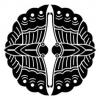
.thumb.jpg.bc10b59027a00aa142dce0349f3ba9e0.jpg)



